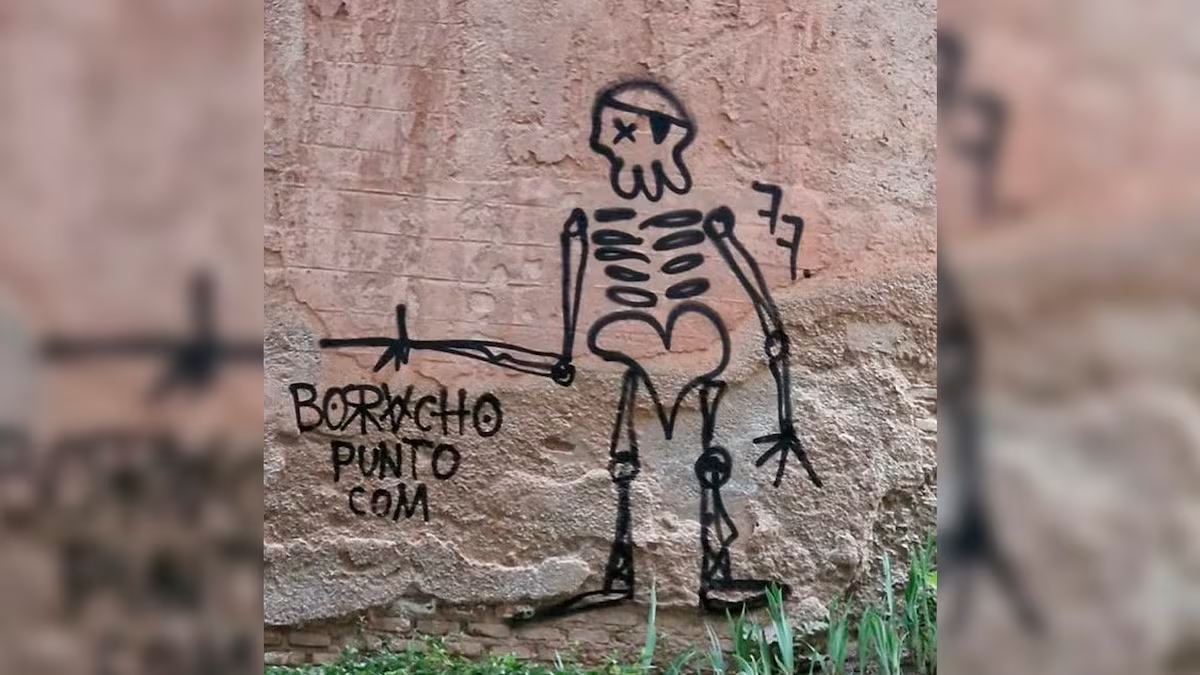TRAVELLERS planning a visit to one of Spain’s most iconic cultural destinations may encounter unexpected scenes of vandalism, as a wave of graffiti has recently defaced major historic sites in central Granada – including the world-renowned Alhambra and the charming Albaicin quarter.
Overnight on May 9, at least 20 instances of spray-painted graffiti appeared across the city’s most treasured heritage landmarks. Among the most shocking was a message reading “borracho dot com” (drunkard dot com) scrawled on the Torre de los Siete Suelos, one of the Alhambra’s historic towers. Authorities believe this may be part of a wider anti-tourism protest.
The Alhambra, a masterpiece of Islamic architecture and a UNESCO World Heritage Site, draws more than two million visitors annually and is often considered the jewel of Spanish heritage. Meanwhile, the Albaicin – a maze of whitewashed houses, cobbled alleys, and stunning viewpoints – offers a deeply atmospheric glimpse into Granada’s Moorish past and is a favourite neighbourhood for visitors to stay and explore.
The Andalucian UNESCO Association has issued an urgent call for increased security and faster response protocols to protect these cultural sites, warning that such acts of vandalism not only damage the physical structures but risk harming Granada’s image as a top-tier cultural destination. The group also cautioned that the attacks could jeopardise Granada’s campaign to be named European Capital of Culture in 2031.
In response, local heritage officials have deployed restoration crews to remove the paint and assess the extent of the damage. The Patronato de la Alhambra y el Generalife, which manages the monument, is also urging the public to help identify the vandals and support preservation efforts.

This is not the first time Granada’s historic architecture has been targeted. However, this most recent surge in graffiti is described as the most extensive and coordinated to date.
For travellers planning to visit Granada in the coming weeks, most monuments remain open, and cleaning efforts are already underway. However, visitors may notice some ongoing restoration work and increased security presence around major sites.
UNESCO is also calling for education and awareness campaigns to help combat graffiti vandalism at its source.
In a statement to the media, it expressed concern about the proliferation of graffiti around the Albaicín and all over its walls. The neighbourhood has been recognised as a World Heritage site since 1994.
It would seem that though vandals that have been plaguing the centre of Granada and the Albaicín for many years now, this outbreak specifically targeted the monument as a magnet for tourism.
Although this is not the first time that graffiti has appeared in the Alhambra precincts, it is the first time that an attack of this magnitude has taken place.
Indeed, in December 2011 the appearance of graffiti on the walls of the Nasrid fortress was reported, at points overlooking the then recently-restored Cuesta de los Chinos.
In 2014, the Patronato de la Alhambra y el Generalife mentioned graffiti which had cropped up on monuments in Granada such as the Cathedral, Puerta Elvira and the Albaicin area.
Its response was one of anger: “Graffiti is a practice contrary to the conservation and enhancement of heritage. Regardless of the physical damage to the materials, it distorts its contemplation and enjoyment”.
A series of measures was implemented to try to stop the vandals.
The committee which manages the Alhambra is appealing to the public for help in catching the perpetrators.
“It is necessary to denounce all the facts. We propose to articulate coordinated actions between the local and regional police forces aimed at preserving the integrity of the heritage and to carry out exemplary actions. In this sense, citizen collaboration is essential,” the committee said.








